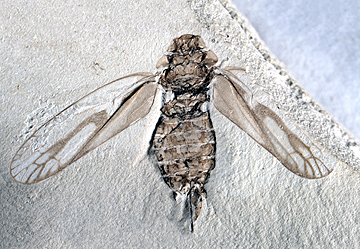Abstract
Since the beginning of the 21st century the rich amber deposits in Kachin State in Northern Myanmar, famous for their excellently preserved biotic inclusions, attracted the interest of scientists (Grimaldi et al., 2002; Ross, 2019). Hundreds of arthropod taxa were described since, including five genera and six species of the lacebug family Tingidae: Spinitingis ellenbergeri, Burmacader multivenosus (Heiss & Guilbert, 2013); Tingiometra burmanica (Heiss et al., 2015); Burmacader lativentris (Heiss & Guilbert, 2018); Paraphatnomacader huarongcheni, Tingiphatnoma bispinosa (Guilbert & Heiss, 2018).
References
Grimaldi, D.A., Engel, M.S. & Nascimbene, P.C. (2002) Fossiliferous Cretaceous amber from Myanmar (Burma): its rediscovery, biotic diversity, and paleontological significance. American Museum Novitates, 3361, 1–71.
https://doi.org/10.1206/0003-0082(2002)361<0001:FCAFMB>2.0.CO;2
Guilbert, E. & Heiss, E. (2018) New lacebugs (Hemiptera: Heteroptera: Tingidae) from Upper Cretaceous Burmese amber. Cretaceous Research, 94 (2019), 72–79.
https://doi.org/10.1016/j.cretres.2018.10.024
Heiss, E., Golub, V.B. & Popov, J.A. (2015) A new subfamily, genus and species of Tingidae (Hemiptera: Heteroptera) from Burmese amber. Zeitschrift der Arbeitsgemeinschaft Österreichischer Entomologen, 67, 1–9.
Heiss, E. & Guilbert, E. (2013) Two new genera and species of Tingidae from Cretaceous amber from Myanmar (Burma) (Hemiptera: Heteroptera). Zootaxa, 3736 (4), 379–386.
https://doi.org/10.11646/zootaxa.3736.4.5
Heiss, E. & Guilbert, E. (2018) A new species of Tingidae from Cretaceous amber from Myanmar (Burma). (Hemiptera: Heteroptera). Zootaxa, 4457 (2), 339–345.
https://doi.org/10.11646/zootaxa.4457.2.10
Ross, A.J. (2019) Burmese (Myanmar) amber checklist and bibliography 2018. Palaeoentomology, 2 (1), 022–084.
https://doi.org/10.11646/palaeoentomology.2.1.5
Wappler, T., Guilbert, E., Labandeira, C.C., Hörnschemeyer, T. & Wedmann, S. (2015) Morphological and behaviorial convergence in extinct and extant bugs: the systematics and biology of a new unusual fossil lace bug from the Eocene. PLoS ONE 10 (8) e0133330

